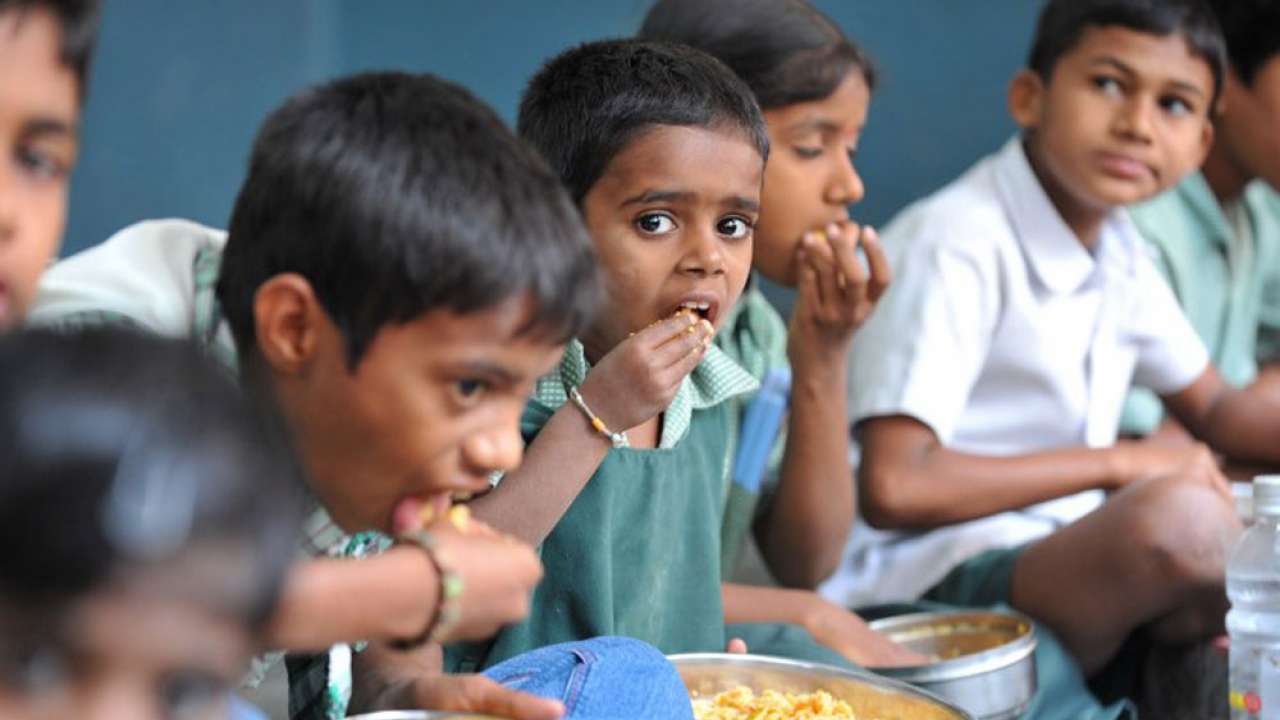
The questions came from different members of Lok Sabha and sought information about irregularities and corruption in MDMS, apart from regular data regarding the prescribed nutritional value of the meals
Nutritional value
The MDMS became a proper cooked Mid-Day Meal Scheme under which every child in every Government and Government aided primary school was to be served a prepared Mid-Day Meal with a minimum content of 300 calories of energy and 8-12 gram protein per day for a minimum of 200 days.
Currently, the nutritional intake is fixed at 450 calories and 12 gms protein for children of primary classes and 700 calories and 20 gms protein for children of upper primary classes. As per the guidelines issued by the government with regards to MDMS, schools are required to procure Agmark quality and branded items for preparation of mid-day meals, tasting of meals by 2-3 adult members of School Management Committee including at least one teacher before serving to children and to put in place a system of testing of food samples by accredited laboratories. There is also an elaborate monitoring mechanism in place at all three levels (Centre, State and District) which includes social audits as also Joint Review Missions which consist of educational and nutritional experts who review the scheme through field visits.
In the funds released by the Centre for MDMS, Uttar Pradesh received the highest amount, at about Rs. 11.2 billion.
Irregularities
The Ministry of Human Resource Development (HRD) stated that in the last 3 years and in the current year, 931 students had reportedly fallen ill after eating mid-day meals, with Jharkhand recording 259 children falling ill after having a mid-day meal, being the highest number among the 12 States that recorded such cases. Second highest cases were recorded in Maharashtra at 201 children.
The HRD Ministry also mentioned that 52 complaints of corruption were reported under MDMS in the past 3 years. States and UTs prepare Action Taken Reports (ATR) which record actions taken against such officials or contractors. As per the data provided on action taken, Uttar Pradesh had the highest number of complaints, which is 14 complaints in the last 3 years, followed by Bihar which has 11 recorded complaints. However, out of the total 52 complaints, 47 were still under investigation at State Level, out of which 17 have been pending since 2017.
Joint Review Mission (JRM)
The latest JRM report was released for 2018-19 and was conducted in 5 states, namely, Andhra Pradesh, Bihar Himachal Pradesh, Maharashtra and Uttar Pradesh. The report observed that while milk and fruits were being served, eating plates were being provided for and LPG was being used for cooking these meals, there were many areas of concern, such as mismatch in data with regard to availability of foodgrains between record maintained at school and the information furnished to district and negative balance of foodgrains in schools. The portion size of the meal was also less than what was prescribed; teachers, stakeholders were unaware about the norms and 42% of school children were still malnourished as there was clear signs of protein and micro-nutrient deficiency among children.
A similar report for Maharashtra stated that while there was a buffer stock of foodgrains in schools, as opposed to the negative balance of foodgrains observed in Uttar Pradesh schools; eating plates were being provided; mobile app was being used for furnishing information related to implementation of MDMS, there were crucial areas of concern. It was observed that about 40% children were malnourished, adults’ BMI (Body Mass Index) was being used for children, inadequate monitoring of the scheme at State level and absence of follow-up action for identified malnourished children.
Clearly, a reading of every JRM report would expose new areas of concerns for each State and each State would need to focus on the recommendations made therein and strive for better implementation of the scheme.
Desk and Field Monitoring of MDMS
The monitoring of MDMS takes place at the Central level as well but it is lagging behind considerably. The many instruments of monitoring include National Streering-Cum-Monitoring Committee(NSMC) which had its last meeting in June 2016, as per data provided on the MDMS website; the Education Secretaries Meetings at National Level last took place in January 2014. There is also no compilation of States’/UTs’ Quarterly Progress Report (QPR) since after 2014. The last monitoring Institutions Report was released in March 2015. The last field visit/inspection was carried out as long ago as June 2013, in Assam, Jammu & Kashmir and Maharashtra.
When it comes to a central scheme, monitoring the implementation of the same becomes the prerogative of the Centre and evidently, the Centre has been neglecting the monitoring of MDMS, except for Joint Review Missions, which only selectively monitor few States and few district within, no account has been further taken on whether the States have acted on the recommendations of the JRM either. If MDMS is to be a successful children’s primary nutrition program, the implementation of the scheme needs to be monitored on a periodic basis, consistently; especially in such time where we are still battling malnutrition in children.
